The organizers of the William Boucher reunion are starting with incomplete information about the family, as often happens. My cousins Cheryl and Connie and I all have lists of William Boucher’s descendants, but of course these lists are more accurate about Boucher’s children – Willy, Sophia, Freddie, Oscar, Frank, Imogene, Pauline, Victor, Josephine, Willy, Josephine, Gertrude, Louis, Frances, Marie, Pauline, Ernest, Carlos, Florence, Emile, Constance, and (yes) Emile and Constance – than about modern-day descendants. How best to find today’s Boucher family? Continue reading Organizing a family reunion: Part Two
Category Archives: Research Methods
Useful databases at AJHS-NEA
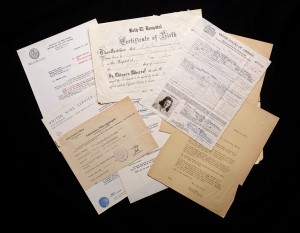 As the American Jewish Historical Society, New England Archives (AJHS–NEA) has only recently formed a strategic partnership with the New England Historic Genealogical Society (NEHGS), anyone interested in New England Jewish history or genealogy may want to know about several databases and collections that might be specifically useful for genealogical research. They include the following: Continue reading Useful databases at AJHS-NEA
As the American Jewish Historical Society, New England Archives (AJHS–NEA) has only recently formed a strategic partnership with the New England Historic Genealogical Society (NEHGS), anyone interested in New England Jewish history or genealogy may want to know about several databases and collections that might be specifically useful for genealogical research. They include the following: Continue reading Useful databases at AJHS-NEA
Age old problems and comfort zones
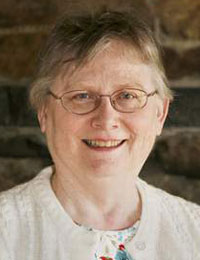 In my last post, I left Abigail (Smith) Carey in a Black Hole with conflicting information about her age. Age discrepancies are a common cause of Red Flags and avoiding them requires an understanding of such things as the average age at marriage for men and women in the time period with which you are dealing, the childbearing ages of women, legal ages, etc. I’m not aware of a single source that provides a good overall summary of these questions – let me know if you are. Continue reading Age old problems and comfort zones
In my last post, I left Abigail (Smith) Carey in a Black Hole with conflicting information about her age. Age discrepancies are a common cause of Red Flags and avoiding them requires an understanding of such things as the average age at marriage for men and women in the time period with which you are dealing, the childbearing ages of women, legal ages, etc. I’m not aware of a single source that provides a good overall summary of these questions – let me know if you are. Continue reading Age old problems and comfort zones
“Very serviceable”: Maidservants in New England, 1638-41
 Young men and women of relatively high status, including the children of close relatives, passed through the households of the Winthrops and their friends: it was a rite of passage. Continue reading “Very serviceable”: Maidservants in New England, 1638-41
Young men and women of relatively high status, including the children of close relatives, passed through the households of the Winthrops and their friends: it was a rite of passage. Continue reading “Very serviceable”: Maidservants in New England, 1638-41
Canadian colonization companies: an introduction
One of the best things about working on the reference desk at the New England Historic Genealogical Society is that each new patron brings new challenges. Often new discoveries come with these challenges that I can use down the road to assist another patron. Such an event happened recently. (Click on the images to expand them.) Continue reading Canadian colonization companies: an introduction
The Great Migration: Top-down, bottom-up
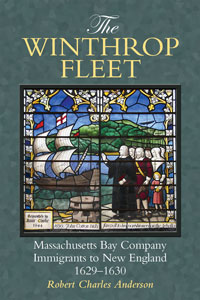 The activities of the Massachusetts Bay Company in 1629-30 were uniformly organized from the top down. The Company either purchased or hired the vessels to carry the passengers and provisions. The passengers themselves, and especially the critically important professionals such as ministers and soldiers, were recruited by the Company leaders. Continue reading The Great Migration: Top-down, bottom-up
The activities of the Massachusetts Bay Company in 1629-30 were uniformly organized from the top down. The Company either purchased or hired the vessels to carry the passengers and provisions. The passengers themselves, and especially the critically important professionals such as ministers and soldiers, were recruited by the Company leaders. Continue reading The Great Migration: Top-down, bottom-up
“The place where you are”: letters to New England, 1631-36
 As I read through the third volume of the Winthrop Papers, one of the Winthrop correspondents I have most enjoyed is Edward Howes, described succinctly in a footnote as a “student of law, alchemist and mystic, clerk to [John1 Winthrop’s brother-in-law] Emmanuel Downing, [and] friend of the younger John Winthrop.” (Volume 2, p. 226) I find myself looking forward to Howes’ letters’ salutations, and to the mixture of folk wisdom, political intrigue, and religious fervor I find within their pages. At times Howes and John2 Winthrop sound like the young men they were, not far removed from university punning; in other letters, Howes can be quite formal and business-like as he fulfills commissions for the Winthrops and the Downings. Continue reading “The place where you are”: letters to New England, 1631-36
As I read through the third volume of the Winthrop Papers, one of the Winthrop correspondents I have most enjoyed is Edward Howes, described succinctly in a footnote as a “student of law, alchemist and mystic, clerk to [John1 Winthrop’s brother-in-law] Emmanuel Downing, [and] friend of the younger John Winthrop.” (Volume 2, p. 226) I find myself looking forward to Howes’ letters’ salutations, and to the mixture of folk wisdom, political intrigue, and religious fervor I find within their pages. At times Howes and John2 Winthrop sound like the young men they were, not far removed from university punning; in other letters, Howes can be quite formal and business-like as he fulfills commissions for the Winthrops and the Downings. Continue reading “The place where you are”: letters to New England, 1631-36
Using heraldry for genealogical research
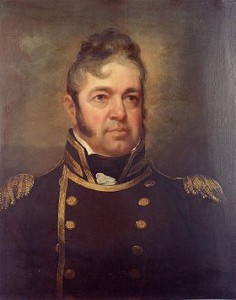
I have had two good personal experiences with heraldry — and no bad ones.
When I was developing the West Indian ancestry of my ancestress, Susanna (Heyliger) Bainbridge, I found that her grandson (my great-grandfather) had drawn up an elaborate coat of arms for her husband, Commodore William Bainbridge, based on the arms of an unrelated Bainbridge family, quartering the arms of an unrelated Taylor family. (The Commodore’s mother was Mary Taylor. For an explanation of quartering arms, see this Wikipedia article.) Included in this heraldic disaster as a single quartering were the supposed arms of the Heyliger family. And, as it turned out, they were valid arms — though not for the Heyliger family. Continue reading Using heraldry for genealogical research
Missing nails and black holes
 My “Devil’s advocate” pops up and waves red flags at me whenever something is not quite right based on “our” experience. Our most often used flag is for “black holes” – too much missing information. The connection may be right, but it certainly hasn’t yet been proved, and skipping over these holes is like skipping two out of every three nails when you build your deck – it might hold for a while, but it isn’t safe. Continue reading Missing nails and black holes
My “Devil’s advocate” pops up and waves red flags at me whenever something is not quite right based on “our” experience. Our most often used flag is for “black holes” – too much missing information. The connection may be right, but it certainly hasn’t yet been proved, and skipping over these holes is like skipping two out of every three nails when you build your deck – it might hold for a while, but it isn’t safe. Continue reading Missing nails and black holes
“Between the bark and the tree”: ‘The Winthrop Woman,’ 1629
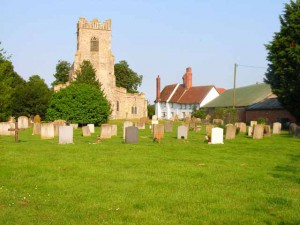
As I delve further into the Winthrop Papers, I am finding interesting asides about the relationships within the Winthrop family. Like his father, Governor John1 Winthrop (1588–1649) remained close to his “brothers” and “sisters,” such as Thomas Fones (d. 1629), the widower of Winthrop’s sister Anne, and Thomas’ second wife, Priscilla (Burgess) (Sherman) (Fones) Paynter, the future governor’s “verye louinge sister Mrs. Fones.” Continue reading “Between the bark and the tree”: ‘The Winthrop Woman,’ 1629

